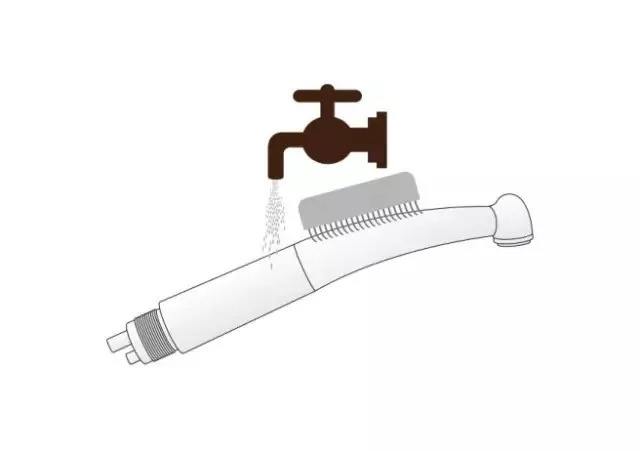Problems and measures in the cleaning of dental handpieces

Analyze the current status of dental handpiece cleaning and disinfection, find out the existing problems, take improvement measures, and improve the quality of sterilization.
During oral treatment, the dental handpiece has to contact the patient’s mucosal tissue. The dental handpiece generates negative pressure at the moment it stops rotating, so that secretions, blood, tissue fragments, etc. in the oral cavity are sucked back into the dental handpiece. When used again, these residues can be injected. Causes cross-infection in the sick population. The use of traditional manual cleaning and chemical disinfectants can only disinfect the surface of the dental handpiece and cannot remove the internal contamination of the dental handpiece. Therefore, it will cause infection to other patients when it is used again.
Current problems in the cleaning of dental handpieces

- The dental handpiece is cleaned and disinfected manually, so the cleaning is not thorough, especially the large amount of organic matter inside the dental handpiece is difficult to remove.
- It is difficult to effectively clean complex pipelines thoroughly, and it is impossible to observe the cleaning effect of the internal surface.
- Pollutants (such as blood, tissues, debris) are difficult to clean after drying, the cleaning is not thorough, the dirt blocks the pipeline, and the deposited dirt is corrosive to the goods.
- The dental handpiece is not sterilized, only a simple surface disinfection with chemical disinfectants (2% glutaraldehyde, 75% alcohol), and a large number of microorganisms remain inside.
- Application of autoclaving, but not thoroughly cleaned beforehand, so a large amount of organic matter is stored in the cavity of the dental handpiece. After repeated autoclaving, it will seriously affect the use and order of the dental handpiece.
- For the quality control of cleaning, there is no quality control standard at present, and it still relies on the naked eye of the staff to ensure the cleaning effect.
Effective cleaning measures

- Use international advanced dental thermal cleaning/disinfection equipment to automate the external and internal cleaning and disinfection of contaminated dental handpieces.
- Adopt centralized supply, unified cleaning, disinfection and sterilization.
- Clean the dental handpiece immediately after use — rinse with tap water. Remove surface contaminants, because the use of disinfectants can cause organic matter to solidify, making it more difficult to clean.
- After the pretreatment, the dental handpiece machine enters the automatic heat cleaning/disinfection machine to start the sterilization process. Adding detergent, disinfectant or enzyme (to digest organic matter) during the cleaning process, the washer-disinfector can adjust the temperature to 93°C to kill infectious pathogenic microorganisms with weak heat resistance. The washing machine is equipped with a special dental handpiece socket and different water flows, including the water flowing through the dental handpiece, so it can clean the inside of the mobile phone well. The washing volume of all washing process water exceeds 5T, and the actual water consumption is about 70L. . If the instrument is not thoroughly cleaned before sterilization to remove the attached biofilm and reduce the number of surface microorganisms, it is likely to cause dental sterilization failure.
